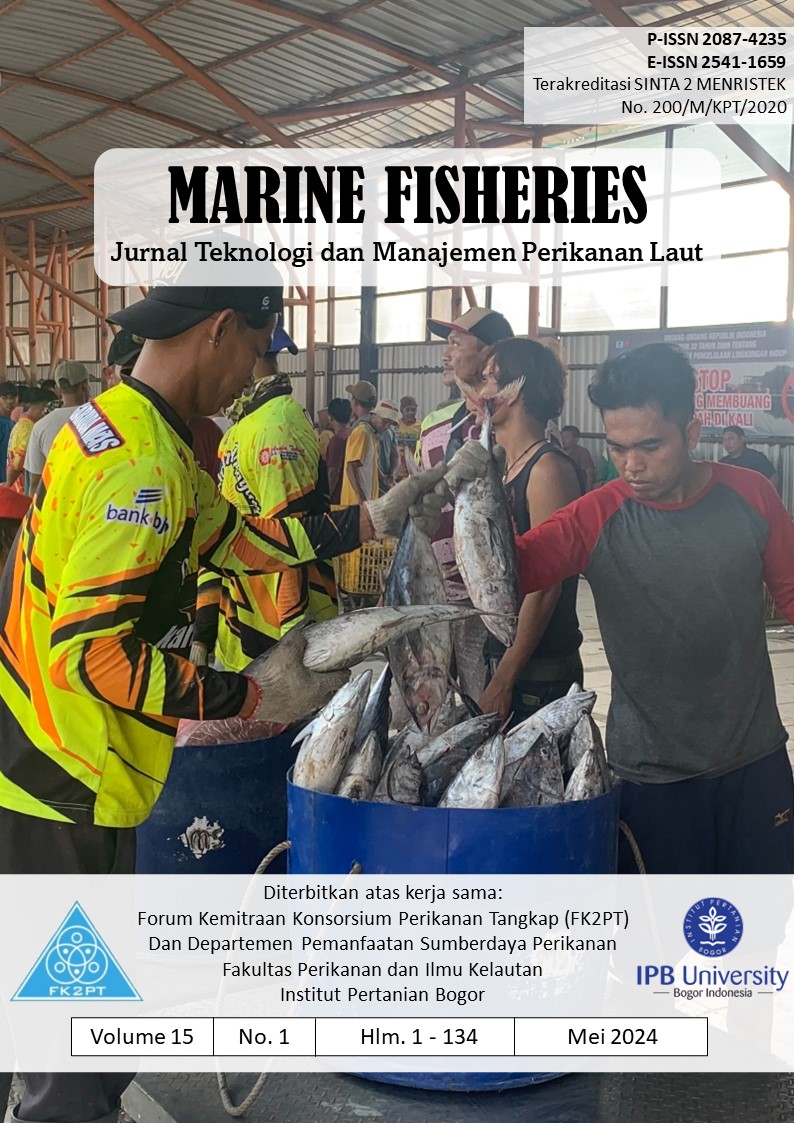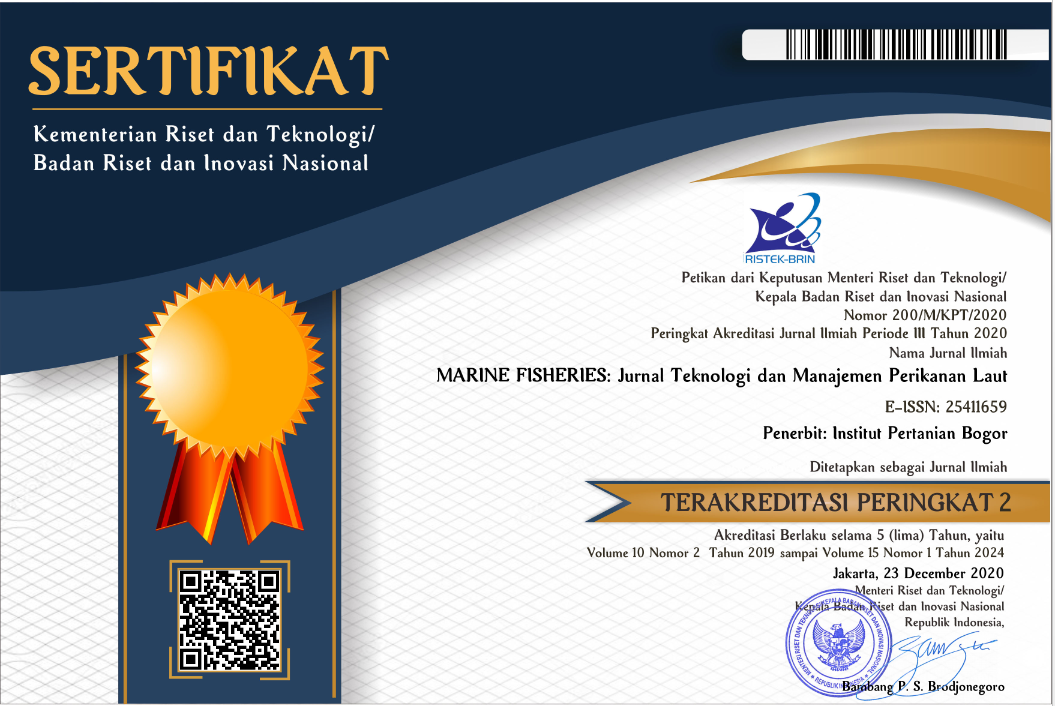POLA ANTREAN KAPAL PENANGKAPAN IKAN DI PELABUHAN PERIKANAN KARANGSONG, KABUPATEN INDRAMAYU
Abstract
A catch unloading is a fishing vessel activity carried out regularly at the port. The high frequency of unloading activities leads to a long queue which requires fishing vessels to wait in significant time for their unloading turn. One of the fishing ports with a significant waiting time is Karangsong Port, where the unloading queue can reach three weeks. To reduce the waiting time, there is a need to identify the utilization level of unloading facilities and queue patterns, as well as calculate unloading time and its influencing factors at Karangsong fishing port. This case study was focused on vessel queuing patterns, utilization of port facilities and the length of unloading time. Data were collected through direct interviews and observations. Based on the calculation results, the utilization rate of the unloading dock is 20.16%, TPI is 36.63% and the port basin reaches 577.86%. The vessels queue in double lines with a single service facility. The average length of unloading time for >30 GT vessels is 2.60 hours while for ≤30 GT vessels is 11.92% faster which is recorded at 2.29 hours. Factors affecting the length of unloading time incorporate the vessel's size, crew size, number of catches, availability of scales, market demand as well as the vessel's position and number of vessels in the queue.
Keywords : Queue, fish unloading, port facilities
Downloads
Copyright (c) 2024 Raistsa Rabbaanii Sunda Rukmana, Izza Mahdiana Apriliani, Pringgo Kusuma Dwi Noor Yadi Putra, Lantun Paradhita Dewanti

This work is licensed under a Creative Commons Attribution-NonCommercial 4.0 International License.
Author(s) who published in this journal agree to following terms:
- Author(s) must understand and agree that the copyright script in published owned by the Marine Fisheries Journal. The copyright includes reproducing and selling the manuscript to all parties.
- Everyone can cite every manuscript published in Marine Fisheries for educational purposes, with the author's name and the Marine Fisheries Journal on reference.









